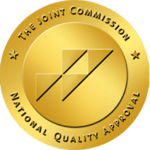Sober living is a stage in recovery that occurs after inpatient treatment and detoxification. It is a transitional process that prepares and guides those in recovery towards a fully independent life back in the outside world. Because alcoholism and drug addiction are chemical dependencies, sober living can be difficult to achieve independently once their primary addiction treatment program is over.
The rehabilitation and recovery process is discussed between physicians, mental health professionals, and the client prior to leaving treatment. While the ultimate goal is for the individual to maintain their sobriety, it can be difficult due to various factors like access to substances and life stress. Since most inpatient treatment programs are completed relatively quickly, it can be difficult to achieve lasting sobriety, especially if the addiction persisted for a long time.
Those in recovery may choose to live at a sober living residence after leaving treatment. Based on the noted success rates at sober living facilities, physicians, mental health professionals, and medical organizations often encourage this pathway for clients. The sober living programs help those in recovery adjust to regular life through support, accountability, and therapy.
Stability in Sober Living
Sober living homes offer a warm, peaceful, and stable living environment. Residences are beneficial because they are completely free from outside pressures and harmful influences. There usually have a staff or a house manager who lives and works on-site to run operations and assist residents.
Depending on the type of sober living home, they may provide supplemental activities, such as:
- Hiking
- Yoga
- Meditation
- Mindfulness programs
These activities can be helpful when used in addition to therapy or medication-assisted recovery.
Individual therapy and group counseling are necessary parts of post-treatment life. If the meetings do not occur on the property, sober living homes may assist in providing or finding reliable transportation for residents, ensuring that they get to their meetings.
Sober living homes all have strict rules. There are usually visitor restrictions, and there are no overnight visitors allowed. But all homes, regardless of type, require sobriety for the entirety of their stay. All residents must submit to random drug testing in order to prove that they are living clean and sober.
Sober Life After Treatment and Detox
Sober life will include struggles and obstacles, mostly due to addiction urges or pain from breaking their chemical dependence. During withdrawal, those in recovery may experience headaches, flu-like symptoms, restlessness, tremors, and even seizures. Emotional withdrawal symptoms may result in depression, anxiety, insomnia, isolation, irritability, or an inability to focus.
For withdrawal and drug and alcohol detox, the actual time varies based on the length of the addiction, type of drug used, method, the amount taken, genetic links and variants, and medical history. Once the substance has completely left the body and the individual is in stable health, the client is usually discharged after 30 days of being drug and alcohol-free. However, addiction cravings will still be present, making the ongoing process of recovery extremely challenging.
The Benefit of Support in Sober Living
Chemical dependency takes a long time to permanently break, but the quest for sobriety should not be viewed fearfully. Physicians, medical workers, and mental health professionals all provide consistent support when a client is undergoing primary treatment, detox, and rehabilitation. After inpatient drug rehab, sober living homes provide helpful assistance for easing recovery challenges.
A return to drug and alcohol usage simmers in moments of triggering memories, absolute solitude, negative thinking, and loneliness. However, sober living prevents those moments from gaining leverage and finding a way to grow. The built-in sober living community is a support system that forces those in recovery to interact with other residents and house staff, doctors, therapists, twelve-step program sponsors, and wellness experts.
Ensuring that you have a specific plan for life after treatment is also important for success. Fighting an active addiction needs routine, rules, and firm boundaries. Sober living provides this by minimizing stressors while methodically preparing residents for life on their own.
Sober Living at Westwind Recovery®
Our sober living recovery residences have positive, statistically proven rates of success for people transitioning back to independent life and sobriety. Individuals who choose to live in sober living benefit from the in-house support. Communal living in a controlled, peaceful, and substance-free environment positively outweighs all other recovery options. Don’t waste another moment struggling with healing on your own. Reach out to Westwind Recovery® at 855.340.8832 to learn more about our sober living homes in Los Angeles.

Dr. Deena is the Chief Clinical Officer of Westwind Recovery®, an award-winning outpatient treatment center in Los Angeles where she oversees the clinical and administrative program and treatment methods. Dr. Deena is a doctor of psychology and licensed clinical social worker since 1993. LCSW #20628. Originally from the East Coast, Dr. Deena has worked running treatment centers, worked as a therapist in psychiatric hospitals as well as school settings and currently has a thriving private practice in the LA area. Dr. Deena has appeared regularly on the Dr. Phil Show as an expert since 2003. She has also been featured on many other TV shows, podcasts and has contributed to written publications as well as podcasts.



